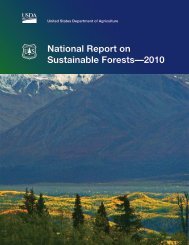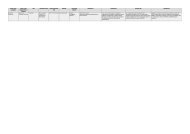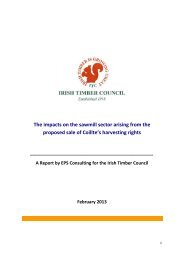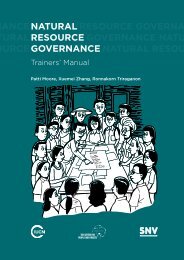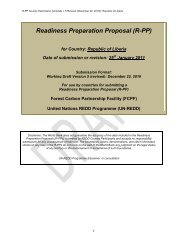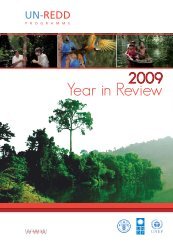pdf 1242 KByte - JIKO
pdf 1242 KByte - JIKO
pdf 1242 KByte - JIKO
You also want an ePaper? Increase the reach of your titles
YUMPU automatically turns print PDFs into web optimized ePapers that Google loves.
Policy Paper: Assessing prerequisites for market-based REDD+ activities 30<br />
5 Conclusions<br />
This policy paper aims at identifying and assessing the elements needed for developing countries to access a<br />
future market-based REDD+ mechanism. These readiness elements, which have been structured along the<br />
three building blocks of market readiness developed by Aasrud et al. (2010), were identified through a literature<br />
review and by taking into consideration first experiences from ongoing REDD+ readiness initiatives. In<br />
a second step, the elements were analysed using the criteria of legitimacy, effectiveness, efficiency and equity<br />
(LEEE criteria). Eventually, our focus shifted to the demand side and three emission trading schemes<br />
were briefly analysed with regards to their potential as REDD+ markets and the requirements for such credits.<br />
Technical Readiness Institutional and legal Readiness Policy Readiness<br />
Setting national reference levels<br />
Defining overall responsibility and<br />
coordination<br />
Identification of drivers of deforestation<br />
and forest degradation<br />
Measurement, reporting and verification<br />
of forest carbon<br />
Setting an institutional framework for<br />
MRV<br />
Dealing with forest tenure<br />
Dealing with carbon rights<br />
Overseeing of safeguards and national<br />
standards<br />
Selection of the adequate forestry<br />
policy instrument<br />
Channelling of international funding<br />
Table 1: Readiness elements structured along the three readiness building blocks<br />
Assessing three readiness building blocks<br />
Our analysis revealed that technical readiness can be regarded a central prerequisite for market readiness.<br />
Its elements represent a foundation for results-based REDD+ activities with particular relevance for safeguarding<br />
effectiveness and efficiency. Hence, countries willing to participate in a market-based REDD+<br />
mechanism should be required to set accurate and predictable reference levels at the national level in order to<br />
maintain the environmental integrity of the instrument. These reference levels should be accompanied by<br />
national monitoring systems that deliver robust measurement, reporting and verification of REDD+ related<br />
activities.<br />
Institutional and legal readiness of countries showed to have high relevance for all four LEEE-criteria of<br />
legitimacy, effectiveness, efficiency and equity.<br />
1. In order to safeguard these principles, governments will have to establish national-level institutions<br />
that are able to perform several tasks and functions. The task of assuming the overall responsibility<br />
and coordination of REDD+ activities should be assigned to the highest level possible, facilitating<br />
cross sectoral implementation of activities and allowing fast intervention in cases of undesired repercussions.<br />
2. REDD+ countries will further need to set an institutional framework for MRV either by establishing<br />
new institutions or by recurring to existing ones. Functioning institutional structures for oversight of<br />
Nicolas Kreibich, Christof Arens and Wolfgang Sterk<br />
Wuppertal Institute




